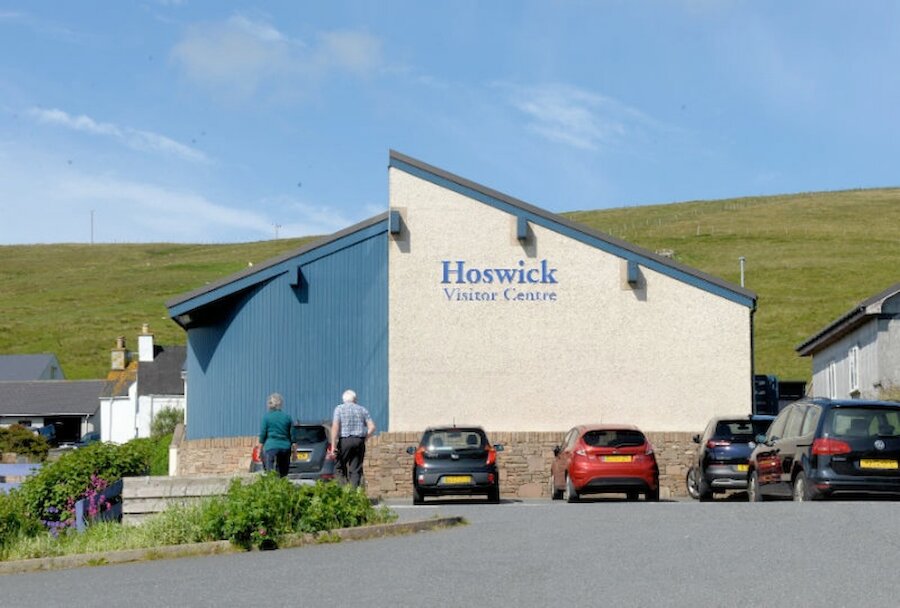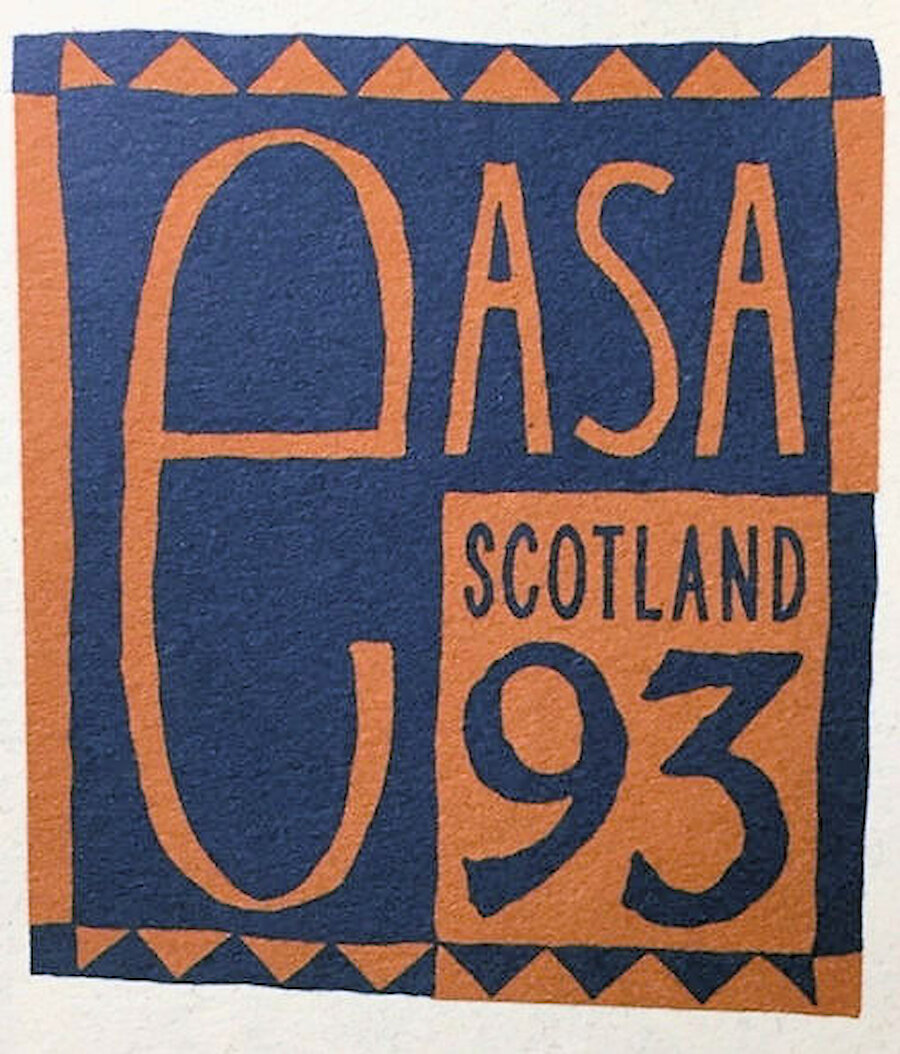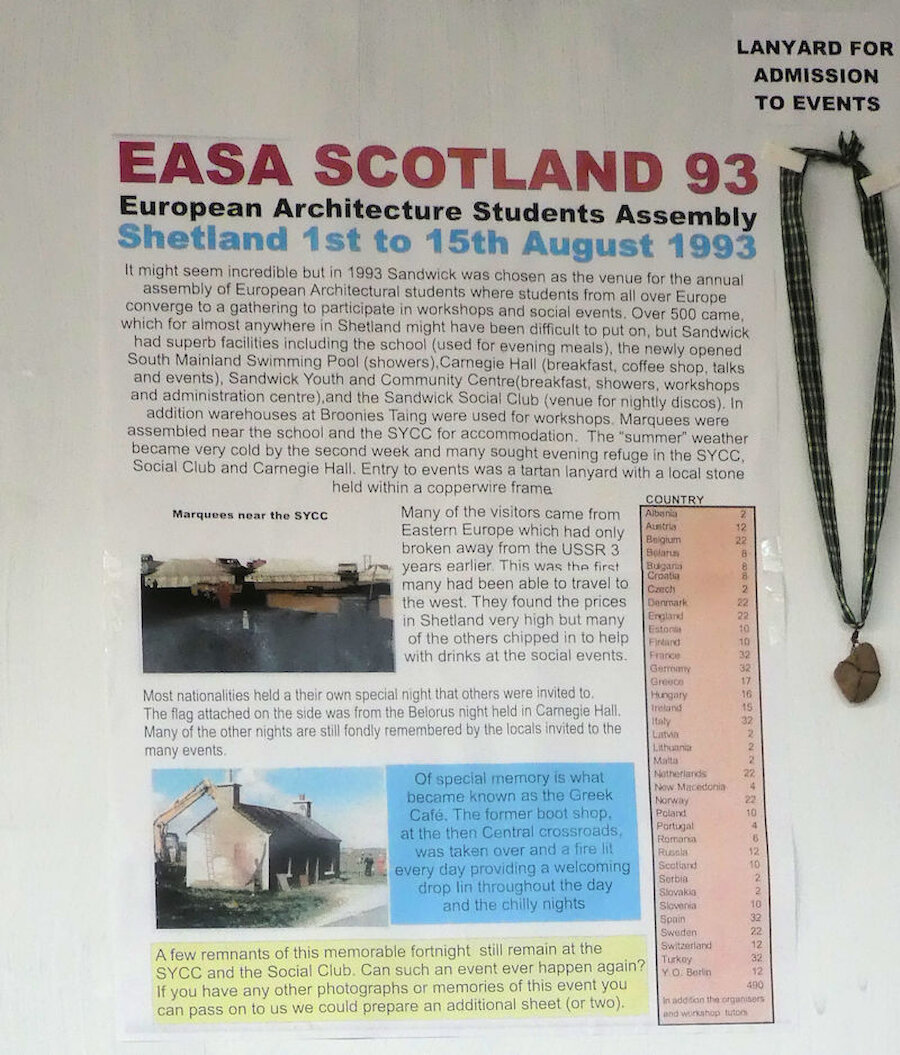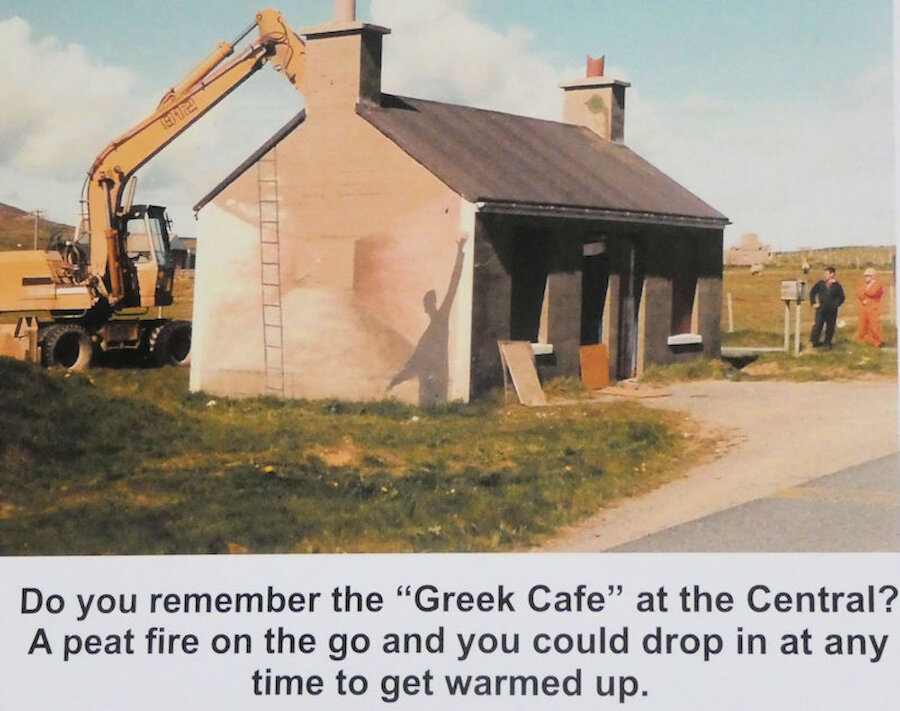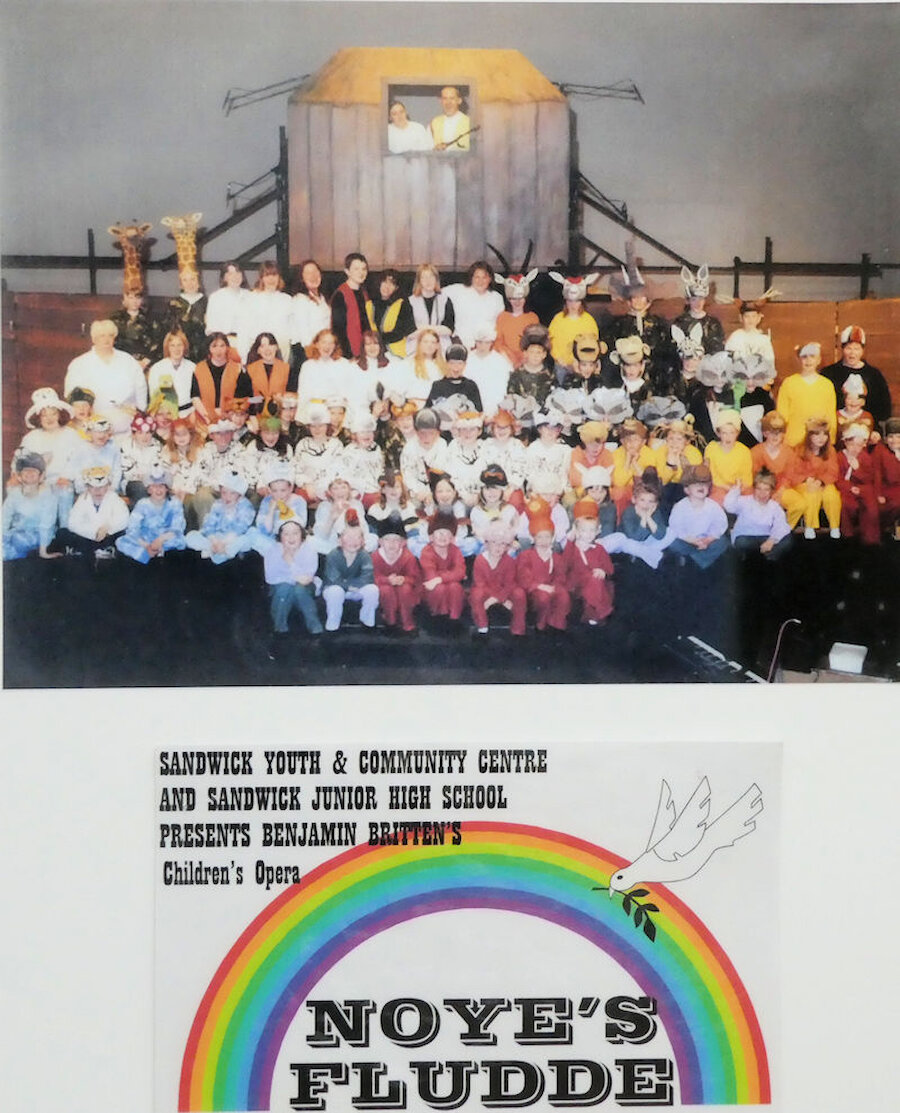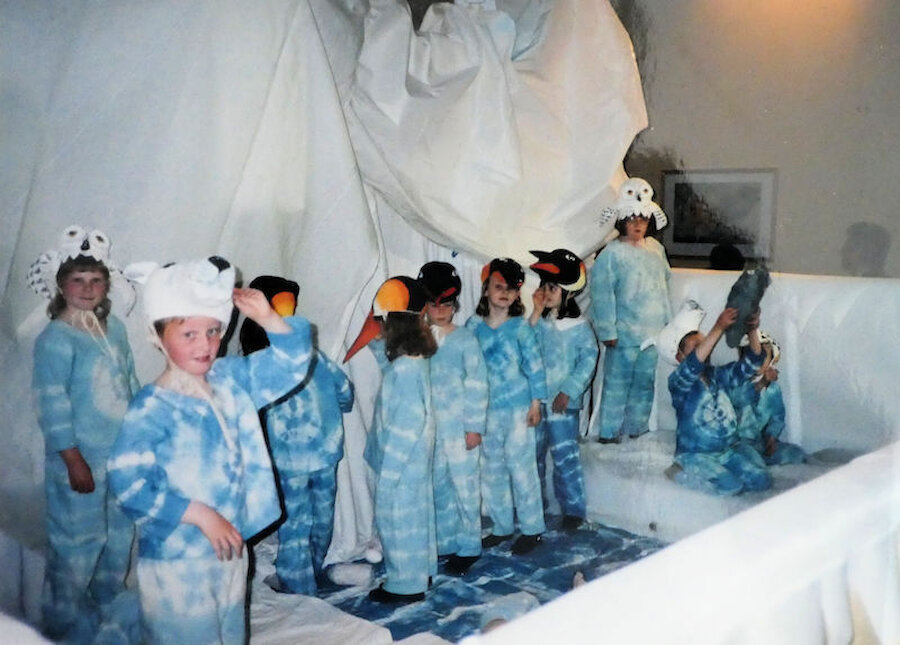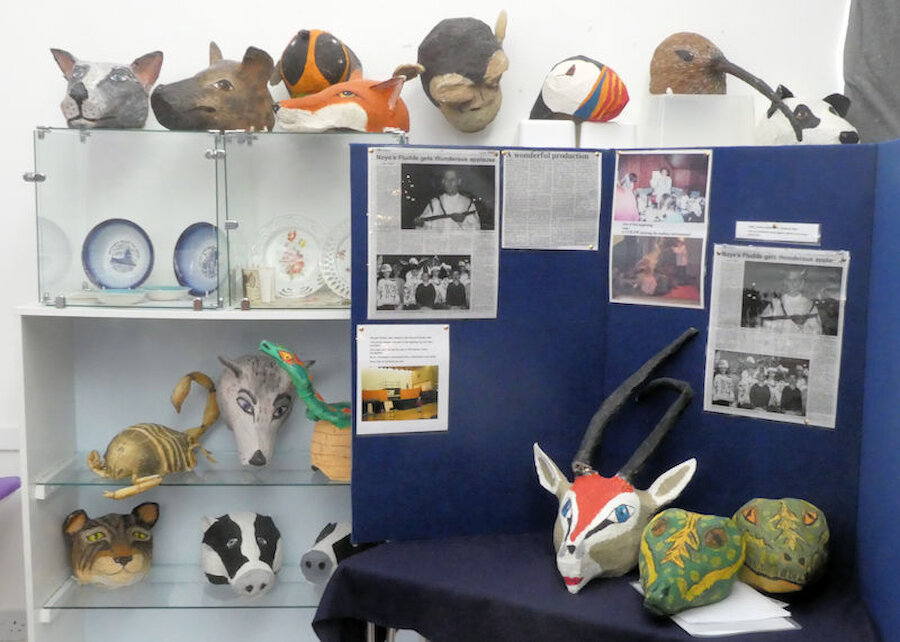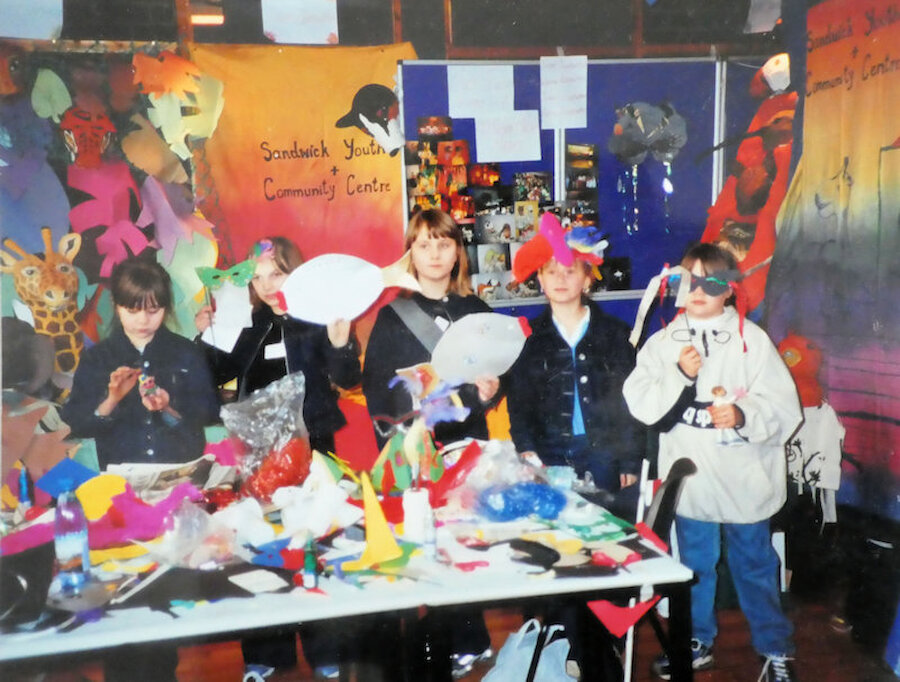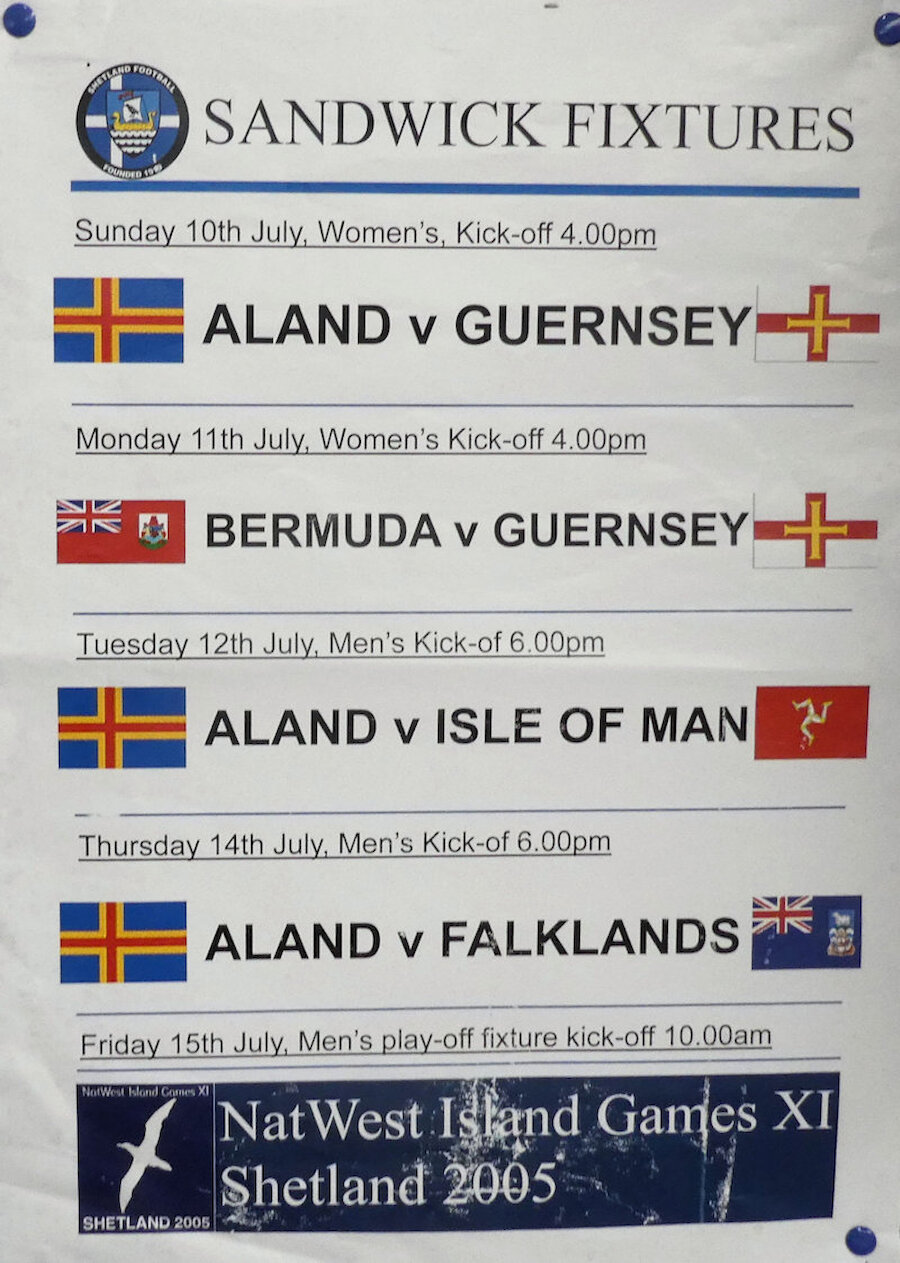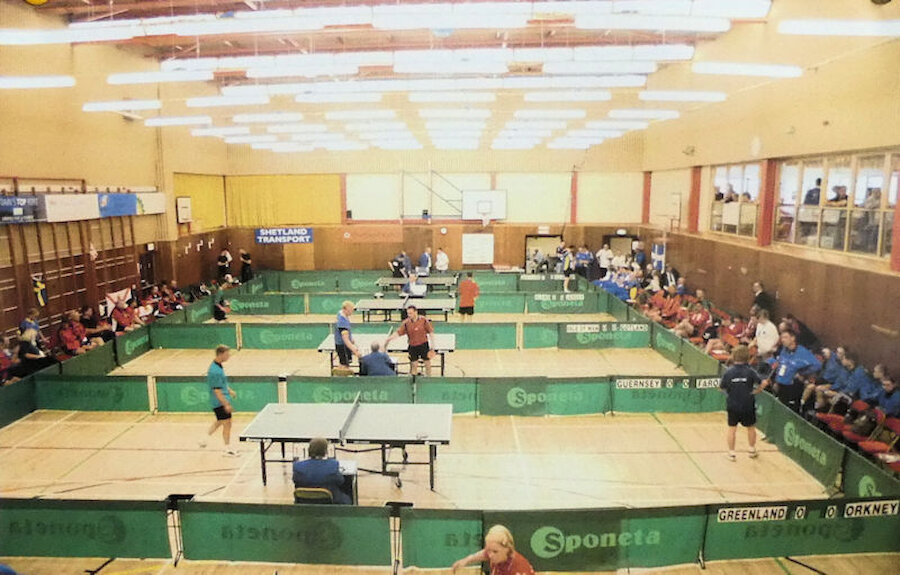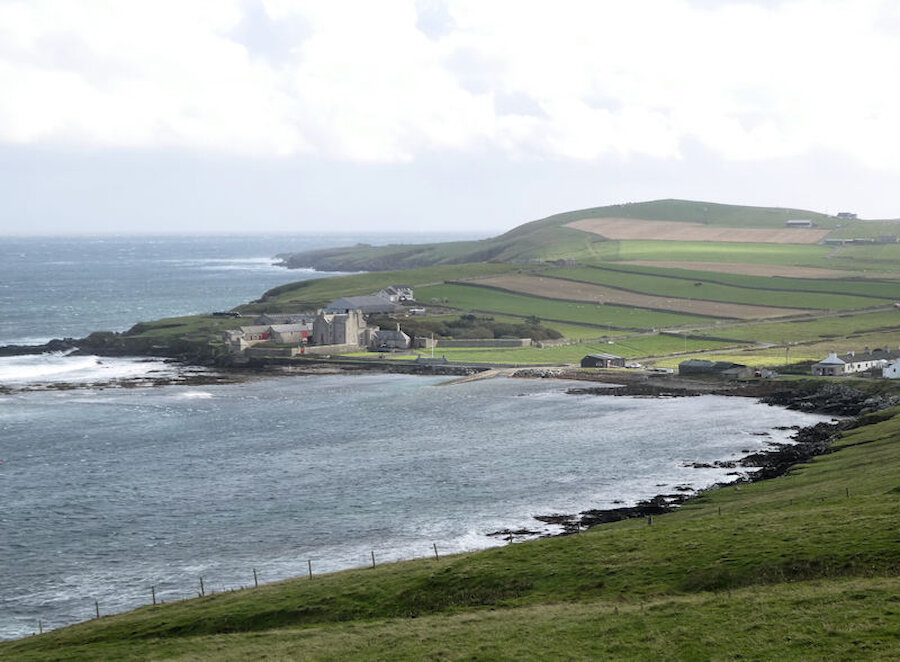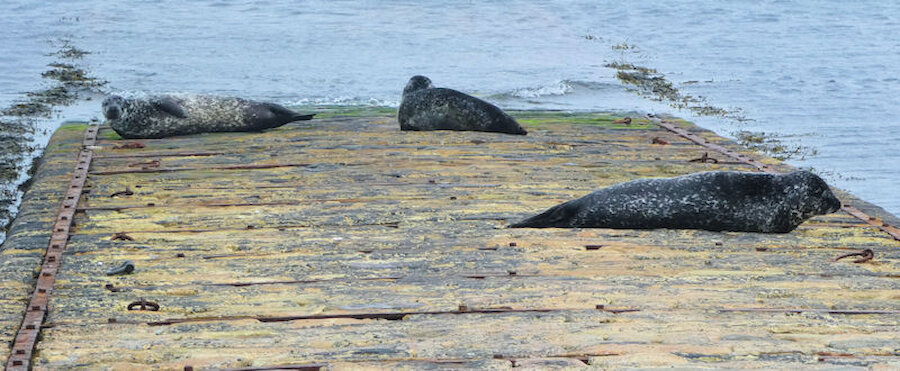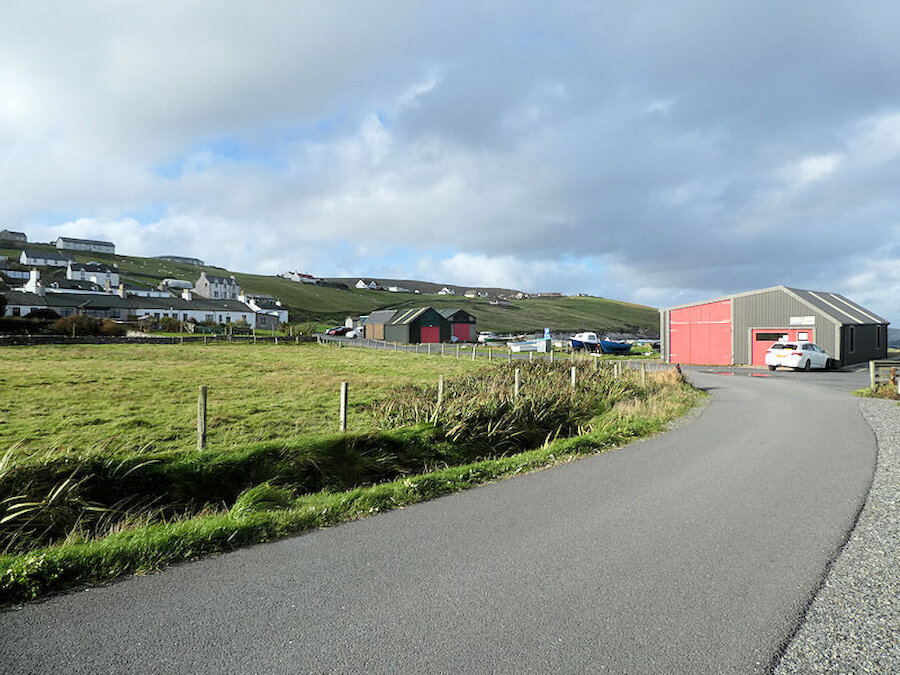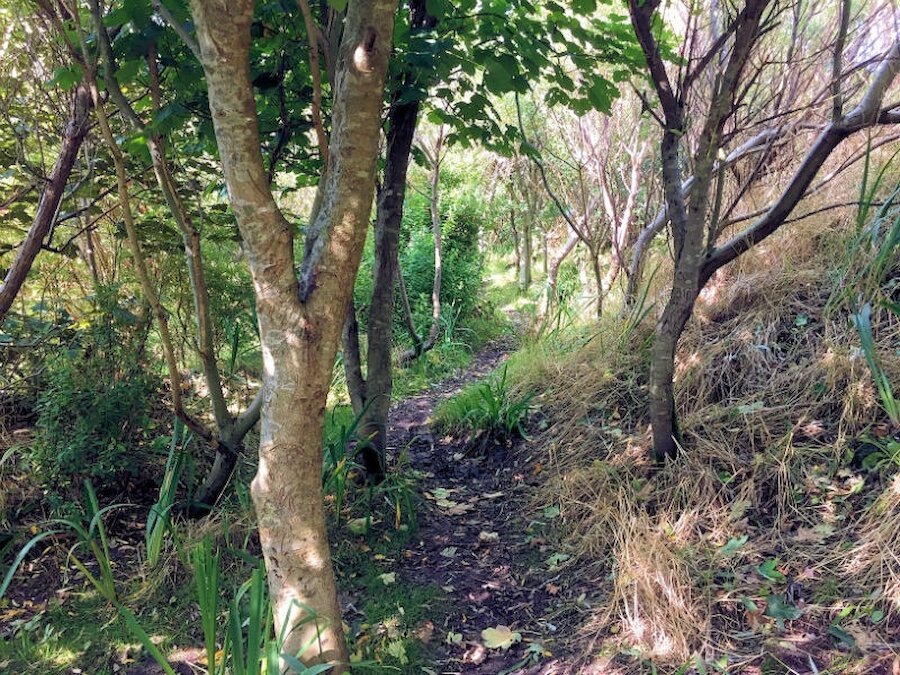When I last spoke to Rosemary Inkster and Neville Martin, who are two of the leading figures in Sandwick Social and Economic Development (a charity), they were putting the finishing touches to some major improvements at the Hoswick Visitor Centre. They were also able to point to progress of other kinds: you can read about that here.
This time, I found them in reflective mood, for they’d put together a fascinating retrospective exhibition featuring three of the major events that the community has hosted in the past thirty years or so. In fact, they’d originally intended to do something last year to mark the 20th anniversary of the establishment of the Sandwick Community Development charity, but – as with so many things – Covid intervened.
However, as we’ll see, their efforts are far from over.

